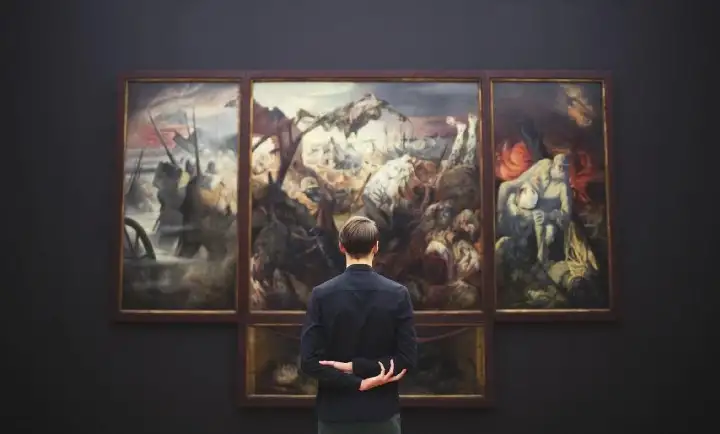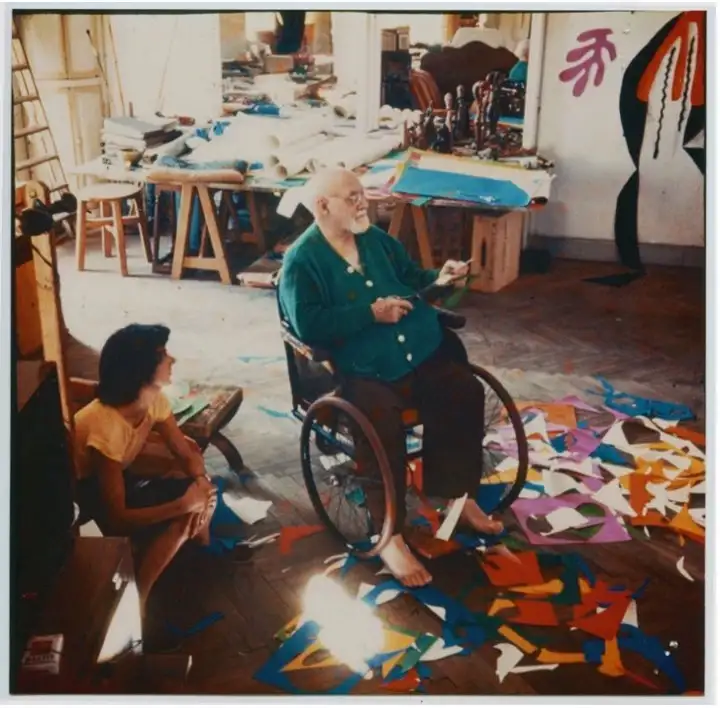
Nov 2, 2018 | 3 min read
5 qualities that an effective Organizational Design shares with a Great Artist’s masterpiece
I have always believed that the design of an Organization is not an exact science. And to ensure that the PeopleWiz team maintains objectivity while designing organizations, I have always insisted on maintaining rigour in the design process. But it wasn’t until my six-year-old daughter got me hooked on her creative pursuits that I realized how close organizational design is to art.
As the two of us learnt more about masterpieces of great artists and I continued to help clients in structuring their companies, the lines between my work and our mummy-daughter art time got blurred.
Here is why I think an effective organizational design draws a parallel to a painting created by a great artist
1.A Strong Focal Point
Whether it’s Mona Lisa’s smile, the swirling lines that encase Van Gogh’s moon in the Starry night or Raza’s Bindu, a strong focal point can be either bold or subtle but emphatic. It is the first thing a viewer of the artwork would notice and engage with. The painter aligns all elements of his art with enhancing the focal point.
In Organizational Design, the focal point is business strategy. People, processes, technology, systems have to align with the strategy for them to be relevant to the organization. When we initiate a design process, great care and patience are taken to understand all aspects of the business strategy and engage with its legacy and bearing. The success of the design is how well the building blocks enable the realization of business strategy.
2.Layers of Colour
The painter’s choice of colour can evoke waves of emotion in the viewer. Colours can make one feel calm, energized, glad or even reflective. This is not limited to the number of colours on a painter’s palette and how s/he builds layers one over the other or next to each other. Pollock’s Enchanted Forest exhibits the magical beauty of dense layering even with a restricted palette of gold, black, red, and white.

One of the most important decisions to make while designing an organization is regarding the optimal layers. With too many, you end up with a rigid vertical hierarchy and with too few, you might starve the necessary thought and focus that an organization needs. We recently helpeda client transform the structure that was buckling under the pressure of its legacy double-digit management layers. With no actual magic number of layers to guide us, the team diligently evaluated the value add at every level. We created a compact structure that would accommodate essential managerial oversight required for the operations and provide an enchanting career path to budding leaders. As Pollock shows in his unorthodox ways, the right number of layers can create magic.
Changes in Direction
A brushstroke is fundamental to a painting. From Henri Matisse to Joan Mitchell, many great artists used changing the direction of the brush to create vividness of colour and vivacity of lines. The brush movement on canvas makes its statement, and the greatest of the artists take advantage of changing brush directions and differing strokes from various angles. There is great potential in a blithe brushstroke, and all exceptional artists explore this by changing directions.
For some time now, the business dictionary has been invaded by terms like volatility, uncertainty, agility, responsive organization, reconfigurable structure and the likes. Performance management is now continuous, products have become iterative, and organizations are used to sensing and responding to customer needs. A directional change in goals and plans is expected frequently, and adapting to change is considered a core competency. In addition to vertical organizations, designing horizontal organizations has become increasingly important. This includes creating cross-functional teams, a community of practices, formal networks, matrix relationships and a centre led team of teams with a shared purpose. Organizations are now, by design, prepared to explore the potential of networks and unearth opportunities when directions change.
Sense of adventure
Great artists have an inherent sense of adventure. No amount of planning can predict how your art will turn out. Happy accidents have to be recognized and built upon. To explore new themes, unknown subjects and untried tools, artists have to get out of their creative comfort zones. Matisse’s scissors flung open an artistic adventure that has inspired artists for decades.
No amount of internal planning or external benchmarking can predict that a particular organizational design would deliver the requisite benefits.

Leaders have an unenviable role of pulling the right levers at the right time. Taking calculated risks, trying different approaches, and a sense of adventure sets apart a performing organization. In Matisse’s words- “Creativity takes courage.”
Knowing when to stop
A good painting leaves some things to the viewer’s imagination. Over the last few months, I witnessed first-hand the absolute joy painting brought to my daughter. When she begins to hum and tap her feet, I know she is about to finish her artwork. She knows when she is done. I can merely make conjectures.
In all successful organizational design projects that we have delivered, there is a common thread. The leaders did not wait for the design to be perfect; they just needed it to be good enough to implement. Knowing when to stop the discussions on design and begin focusing on implementing was the key, and capable leaders understood this.
A thoughtful piece of art, whether it’s a masterpiece adorning a museum wall or your child’s first drawing, can excite, stir, soothe or inspire. As Marc Chagall put it, “Great art picks up where nature ends.” At companies, it is the organizational vision that inspires teams. An excellent organizational design picks up the essence of the vision and brings it to life.
Author: Protima Sharma
More Blogs

May 15, 2018 | 3 min read
6 valuable Business Lessons the sitcom “F.R.I.E.N.D.S” taught us
Like everyone else in the world, I am a huge fan of the 90’s sitcom Friends...
Read More
May 15, 2018 | 3 min read
6 entrepreneurship lessons from my 11-month old daughter!
Babies are born entrepreneurs. They step into unchartered territory with enviable confidence...
Read More
May 15, 2018 | 3 min read
6 valuable business lessons that my clients taught me
Happy 6th birthday, PeopleWiz! It’s that day again when we take a pause and look back...
Read MoreDelivering the future of workplace